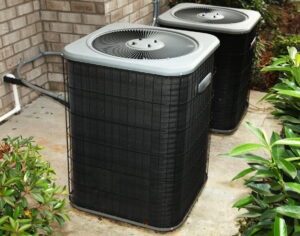
It might be obvious to some homeowners, and less obvious to others, but every house with an air conditioner contains refrigerant. Air conditioners use refrigerant as a central component to the cooling process. Without this material, an air conditioner would just be an oversized fan since it would be unable to drop temperatures consistently.
We often talk about the cooling process and how refrigerant cools the air of a home, but what we seldom talk about are the different types of refrigerants. This is important because it will dictate the future of your HVAC maintenance in Los Angeles, CA. A system that runs with older refrigerant might need a full replacement instead of maintenance, especially with the R-22 phaseout that happened last year.
Let’s talk about R-410A, the most common refrigerant, and what homeowners should know about this kind of material.
The Science Behind R-410A
Years ago the most common refrigerant that was used in air conditioners was R-22, known as Freon. It soon became known that Freon was very damaging to the ozone layer of the planet and was causing an acceleration of greenhouse gases and causing problems for the environment. This prompted the discovery and distribution of R-410A, also known as Puron.
R-410A is a fraction as damaging to the environment as R-22, and it’s just as powerful for cooling. This is the reasoning behind most air conditioners running with this type of refrigerant—it’s just better than the old kind in almost every way!
“Is It Dangerous?”
R-410A isn’t inherently dangerous. It’s kept at higher pressures in your air conditioner for the cooling process, but it’s not like natural gas or oil. It’s not flammable and it doesn’t create carbon monoxide or other contaminants in the air as it cycles through your air conditioner.
However, just because it’s inherently safe doesn’t mean it can’t become dangerous. Any refrigerant, be it R-22 or R-410A, can be dangerous if inhaled or consumed by human beings. If you suspect a refrigerant leak, you’ll need to call for professional help to ensure you stay a safe distance away from it.
“Can I Replace Freon with Puron?”
The answer is no. R-22 must be pressurized differently from R-410A in order to complete the cooling process. It’s like trying to fill up your car’s gas tank with vegetable oil. They might seem like they do the same thing and are similar, but they require completely different systems in order to run properly.
Looking Towards the Future
The truth is that R-410A might be a great refrigerant and a better option than R-22, but it’s not the end goal. As systems get more energy efficient and our laws and legislations get more environmentally conscious, we’re going to need better refrigerants.
There’s talk of a substitute for R-410A down the line, but the specifics are still up for debate. All we know for certain is that eventually, we will be replacing all R-410A using air conditioners with ones that use a more energy-efficient and environmentally-friendly refrigerant that can still get the job done well.
As your HVAC experts, we will surely fill you in on all the details once the jury is out!
Call JMS Air Conditioning and Heating for more information on AC replacement and your refrigerant!

